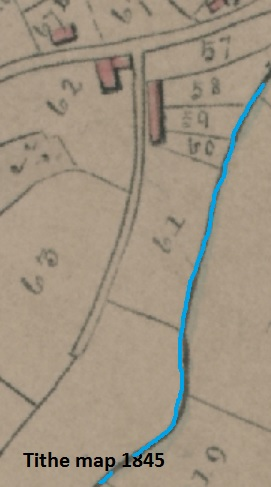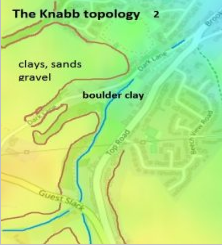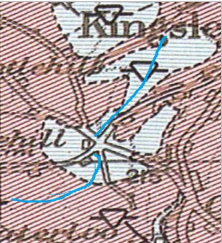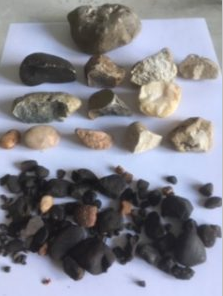After a long illness endured with great dignity, Roger died peacefully at home on Friday 18th June 2021 at the age of 90.
He led a full and active life and will be remembered, particularly by older residents of Kingsley, as being a prime mover in the building of Kingsley Community Centre. Without the efforts of Roger and a small group of friends, it is likely that the village would not have a Community Centre. They came up with the idea during gatherings at the Red Bull around 1970 and developed it into a plan to find the means of funding, a site and gaining planning approval. Moving forward, they assembled a small army of volunteers who helped with funding and then rolled up their sleeves and got stuck in with the actual work of construction.
Roger was born and grew up in Ince and spent the whole of his working life with Shell. After graduating from Loughborough University, he qualified as a Chartered Chemist and worked in research and development where he specialised in lubricants, becoming a world authority in that field. This also led to his work in crystallography.
Roger in racing trim in Sacre Bleu
Please contact This email address is being protected from spambots. You need JavaScript enabled to view it. if you have any questions or further info to add.
Old Bird Names
March 2021
Have you ever wondered how birds got their names?
Names given in the past were based on local custom and varied from county to county and even village to village.
So, depending where you lived a Chaffinch could be known as a Flackie, an Apple-bird or Silverwing. The names were so different across the countryside it’s a wonder how the name of Chaffinch emerged as a universal name!
Nicknames were the most common way of naming a bird, but imagine the variety! As the following list (drawn from various sources) suggests it hardly leads us to the names we know today:
- Blue Tit: Pickcheese
- Great Tit: Pridden-Prals
- Long Tailed Tit: Hedge-Mumruffin
- Starling: Sheep-stare
- Wren: Stumpy-Toddy
- Dunnock: Shufflewing
- Magpie: Meg-Pie
- Greenfinch: Bighead
- Goldfinch: Thistlehead
- Jay: Devil-Scritch
- Nuthatch: Nut-Jobber
- Swift: Longwing (Welsh)
- Kestrel: Hoverhawks/ Wind-Fanner
Country folk had names not only for their fields but also the wild plants that grew there as well the creatures in, on and above the land. These names date back centuries and can still be traced on maps, documents and in oral tradition. Even so, tracing the origins of names whether it be birds, plants, animals, insects, etc., is another matter.
Do old local names for living things still remain in your area?
From the author of The Stream With No Name, Part 1
Please contact This email address is being protected from spambots. You need JavaScript enabled to view it. if you have any questions or further info to add.
The Knabb Stream and Valley: Part 2
February 2021
 In Part 1 the road shown on the 1845 tithe map was considered as significant. For many years it was an alternative to continuing alongside the stream, due to its the depth and speed of flow. A ‘causey’, consisting of slabs, may well have enabled people and horses to cross marshy ground and, although this may seem an arduous way into Kingsley, it was historically embedded in the ways of people at the time.
In Part 1 the road shown on the 1845 tithe map was considered as significant. For many years it was an alternative to continuing alongside the stream, due to its the depth and speed of flow. A ‘causey’, consisting of slabs, may well have enabled people and horses to cross marshy ground and, although this may seem an arduous way into Kingsley, it was historically embedded in the ways of people at the time.
Roads were often no more than rutted, potholed tracks as, often, even Roman roads were left unused by the Saxons, many of whom preferred their old trackways. Nothing much changed until the medieval period when it was left to each parish to maintain their own roads. However, improvements were few and far between with roads often remaining in a dire state. As the 1855 Highways Act proclaimed, ‘for amending highways, now both very noisome and tedious to travel on, and dangerous to all passengers and carriages.’ Unsurprisingly, the great majority of people walked except for those who had the benefit of horses. Travelling was via ancient long-distance trackways, many dating to pre-historic times, as well as a network of local tracks. The result of this is that many of the footpaths we use today were established a long time ago.
I believe the Knabb valley was such a well-used route at least until the early 18th century. Indeed, it was possibly used in pre-history and almost certainly in medieval times when trade was flourishing. This was a time when all the goods required to maintain towns and villages had to be brought in, if not by carts then likely carried on packhorses. For centuries these tough, sturdy animals were the backbone of Britain’s economy, moving goods such as coal, cloth, timber, foodstuffs and many other items as part of packhorse trains, many of which could be 30 horses long. In this manner goods were moved across the country and in places like the upland areas of the Pennines etc, hundreds of journeys were made every week.
Please contact This email address is being protected from spambots. You need JavaScript enabled to view it. if you have any questions or further info to add.
The Knabb stream and the last Ice Age
February 2021
What epic story belies this tranquil setting, with its tree-lined, fast flowing stream? It is an event dating back at least 10,000 years. A time when great tongues of glaciers covered most of Britain. It is hard to imagine it was some 1000m thick in the far arctic north. This was the latest of several Ice Ages, each often lasting millions of years. Beneath, in and on the ice, rocks were being carried mainly from Ireland and the Lake District southwards. These glaciers moved across Cheshire but not always as a continuous ice sheet. Enormous masses of frozen soil and broken rocks were left behind as the glaciers retreated.
Today the Knabb shows the outcome of this glacial deposition with the high ground either side of the stream valley covered with a layer of clay, sands and gravels of varying thickness. In the valley itself, boulder clay, loaded with a mixture of rocks, alien to the area, covered the valley floor.

The simplified map above is taken from the drift geology map (below) of the area, where drift lies on top of the sandstone bedrock; the stream has been added. This 'topsoil' can be many feet thick or a matter of only a few spades depth. The spread of the boulder clay also appears south of Guest Slack and Norley road. Here, the stream continues through marshy ground with almost no discernible banks.

How the valley was formed and whether a river or stream flowed there thousands of years ago, is supposition. A tongue of ice might have occupied the valley, releasing a considerable flow of water as it melted, washing moraine deposits of rocks, sand, gravels and other material into the Knabb valley
Any watercourse moving through the boulder clay would have struggled. A sure sign of this are meanders. Over centuries what may have been a river, carried away the boulder clay leaving its constituent rocks. Today, these rocks, of all shapes and sizes, including pieces of pottery, clay pipes and other debris, cover the sandstone bedrock.
Sampling the stream bed produced an interesting range of rocks, totally absent in Cheshire, apart from sandstone.

All the larger fragments are mainly igneous and metamorphic, formed during volcanic and earth movements, many millions of years ago. For the purists, granite, basalt, quartz, diorite, sandstone was present. A good many smaller, pieces had a black coating. which according to a local geologist, is an algal deposit or some natural trace element entering the stream.
It was suggested to me, that the stream caused these rocks to move downstream when it was flowing at bank high levels. This is true for those smaller rocks covered black all over, showing they have been turned, whereas the large ones stayed put with any algae, if at all, on the upper side.
A third of the course of the stream, below the steps, is natural with the path being its unnatural bank. The far bank shows none of the embanking apparent back to Guest Slack. Here, water thunders out of a large, land drainpipe, powerful enough to move large rocks downstream; yet to be tested
This is the intriguing part of the valley. So many questions come to mind. Why was the stream culverted? Was there once a waterfall? Is there a relationship between here and the 1845 lane? Are the large pools nearby connected? And so on. Interpreting this mystery could open another in its history.
From the author of The Knabb
Please contact This email address is being protected from spambots. You need JavaScript enabled to view it. if you have any questions or further info to add.
The stream with no name, part 1
February 2021
There are many such streams in our countryside. Hardly noticed, they wend their way quietly, largely lost in time and place. Most are little more than a good stride wide, yet many have an untold history. Some fade away, while others continue as before, perhaps, for centuries and never recorded. Anonymous, most are not named or on any map or plan. And so it is with the subject here, no name, but part of a hazy story dating back a thousand years or more. Here, the stream and its path have a local name, the Knab or Knabb. More correctly, ‘Knabbe’, meaning, ‘a hilltop’, a word originating between the 12th and 16th century. Could this offer a sign of its historic context? After all, a hilltop stands behind Whitegate House. Is it possible a Norman lord set a motte-and-bailey castle there to oversee what passed in the valley below? And, if not Norman, then some folk maintain there was an Anglo-Saxon presence in the area. Not only locally, more specifically, where the Knabb stream once fed Kingsley Mill.
Latest Events
Click here for full calendar

